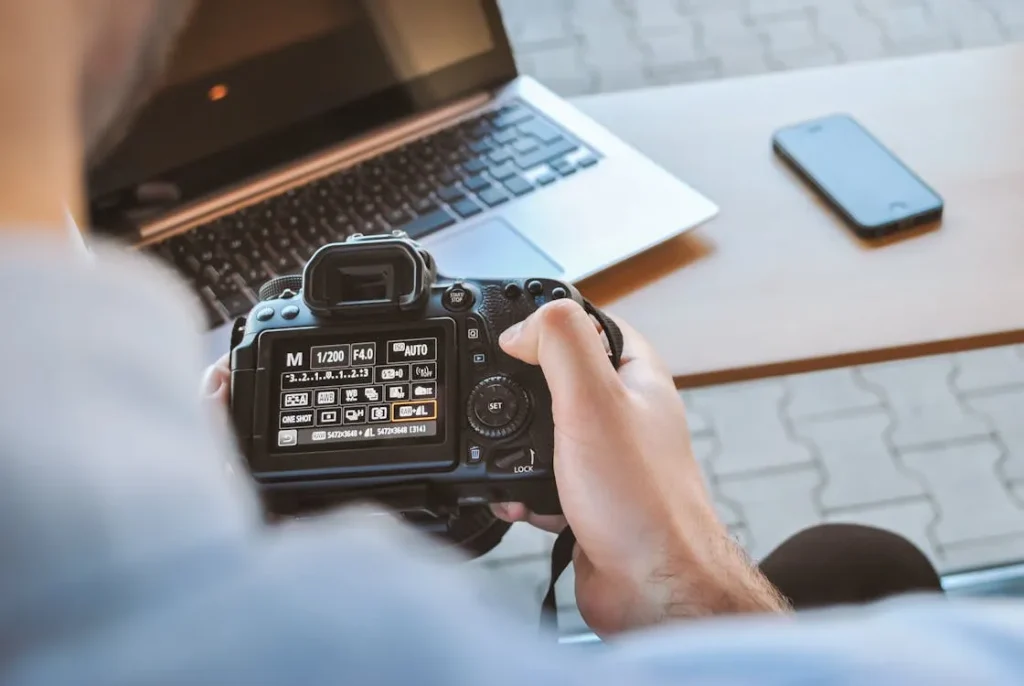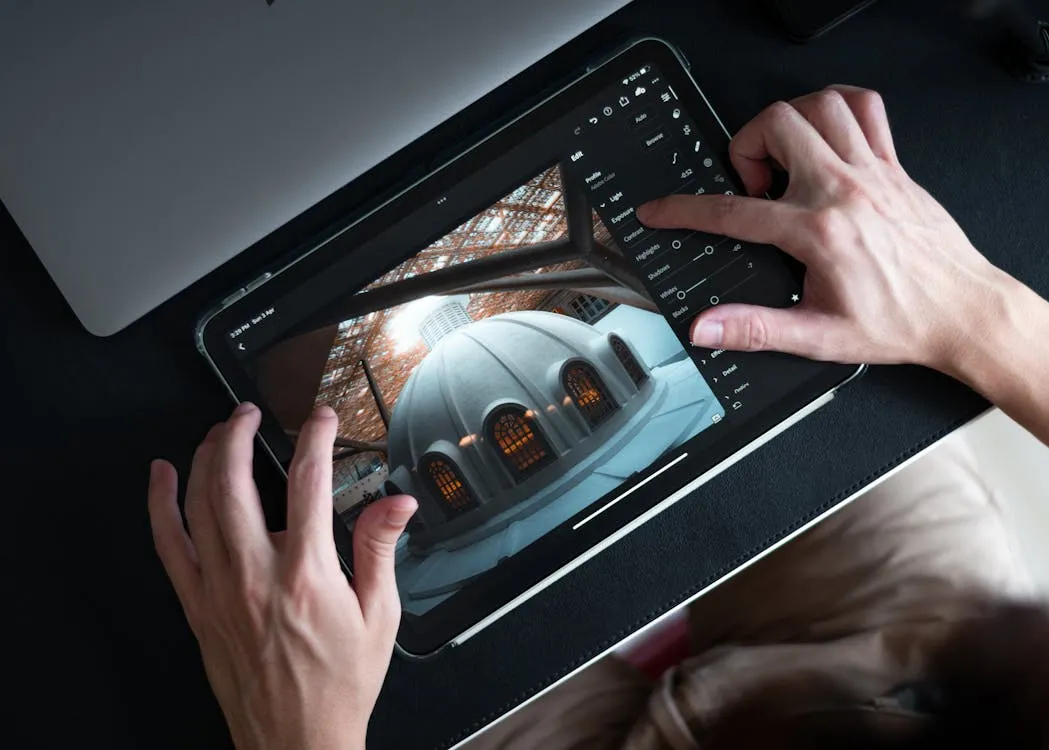Last Updated on October 29, 2025 by Leslie
Have you ever taken a photo that looked great in person—but turned out too blue, too yellow, or just off?
That’s where color correction comes in. And thanks to AI color correction, you can now fix those color issues in seconds instead of hours.
In this guide, you’ll learn what color correction really means, how AI makes it faster and smarter, which tools to use, and how to get the best results for your photos, videos, or designs.
What Is Color Correction?
Color correction is the process of adjusting a photo or video to make its colors look natural and accurate.
The goal isn’t to add a filter or create a mood—that’s called color grading.
Color correction simply makes sure your image reflects reality: white looks white, skin tones look real, and the lighting feels balanced.
Every camera captures colors a little differently. Light, shadows, and even your screen can change how an image looks. That’s why professionals and creators use color correction—to fix problems like:
- Colors that look too warm (yellow/orange) or too cool (blue)
- Overexposed or dark areas
- Faded or uneven skin tones
- Images that don’t match each other in tone or brightness
Accurate color isn’t just about looks—it builds trust. Whether you’re selling a product, posting on social media, or shooting a short film, consistent colors make your work appear more polished and professional.
How AI Is Changing Color Correction
For years, color correction was a manual process that required technical skill and a lot of time.
You had to understand white balance, histograms, RGB curves, and other complex settings.
Today, AI color correction tools are changing the game.
They use machine learning to analyze your image, detect lighting and color problems, and automatically adjust them—often within a second.
Traditional vs. AI Color Correction
| Feature | Manual Color Correction | AI Color Correction |
| Skill Level | Needs training | Beginner-friendly |
| Time Required | 10–30 minutes per image | A few seconds |
| Consistency | Depends on user | Algorithmic, repeatable |
| Ideal For | Professional editors | Everyone (creators, sellers, photographers) |
How AI Color Correction Works
AI color correction models are trained on thousands of photos. They learn what “good” color balance looks like by comparing natural scenes, skin tones, and lighting patterns.
When you upload a photo, the AI detects elements such as people, objects, shadows, and overall tone. It then adjusts temperature, exposure, and contrast to make the image look true to life.
In simple words:
AI doesn’t just guess—it understands color.
Best AI Color Correction Tools to Try
AI color correction is becoming a must-have for creators and businesses alike. While many tools promise “perfect” results, a few stand out for their precision, speed, and innovative features.
Here are three of the best AI color correction tools that are leading the trend—each with its own strengths and ideal use cases.
1. Perfect Corp – AI Color Correction Online
🔗 PerfectCorp AI Color Correction Online
Perfect Corp is one of the pioneers in AI-powered image enhancement. Their online AI color correction platform uses deep learning to analyze lighting, exposure, and tone in real time, producing realistic, balanced results automatically.
Unlike most basic correction tools, Perfect Corp’s model is trained on thousands of commercial photos, which helps it recognize skin tones, product surfaces, and natural lighting accurately. It can even handle batch processing, making it perfect for brands that deal with large photo libraries.
Key Features:
- Smart color balance based on real-world lighting
- Batch upload support for high-volume workflows
- Web-based, no software installation needed
- Maintains true-to-life skin tones and brand colors
Best For:
E-commerce sellers, marketing teams, and influencers who need fast, reliable, and consistent photo output.
Why It Stands Out:
Perfect Corp focuses on accuracy and consistency, not just aesthetics. It’s designed for professional results—ideal when color precision affects customer trust (like online shopping or beauty products).
2. Color.io – AI Color Match
Color.io takes a creative approach to AI color correction. Instead of simply fixing color balance, it uses AI to match the color style of one image to another—a feature often used in video production and digital branding.
This means you can upload a “reference” image (say, a perfectly lit product shot) and have Color.io recreate that exact color tone across all your other photos or clips. The result? A unified, professional look that keeps your visual identity consistent.
Key Features:
- AI-driven color matching between images
- Supports LUT (Look-Up Table) exports for video editors
- Built-in preview and adjustment sliders
- Cloud-based, accessible from any device
Best For:
Content creators, filmmakers, and photographers who need multiple scenes or products to share a cohesive visual style.
Why It Stands Out:
Color.io bridges the gap between color correction and color grading—offering both technical accuracy and creative control. It’s a favorite among creators who care about storytelling through color harmony.
3. Upscale.media – AI Color Correction
🔗 Upscale.media AI Color Correction
If you want something simple, fast, and beginner-friendly, Upscale.media is a great choice.
It’s designed for people who don’t have professional editing experience but still want their photos to look sharp, clear, and well-balanced.
This tool combines AI-based color restoration with image enhancement technology—meaning it not only fixes color but also improves overall quality and sharpness. It’s particularly good at recovering faded or low-light images, such as old photos, screenshots, or underexposed shots.
Key Features:
- One-click AI color and lighting restoration
- Auto enhancement of sharpness and clarity
- Works on low-resolution or old images
- Simple drag-and-drop interface
Best For:
Everyday users, bloggers, and small businesses that need quick fixes without learning complex software.
Why It Stands Out:
Upscale.media combines AI restoration and correction in one process, producing natural, high-quality images instantly. It’s the fastest way to bring dull or faded photos back to life.
How to Combine AI and Manual Editing for the Best Results
Even though AI is powerful, it’s not perfect. Sometimes, you’ll want to fine-tune an image manually after AI correction.
Here’s a simple workflow that professionals and beginners alike can follow:
- Upload your image to an AI color correction tool.
- Let the AI adjust color balance, exposure, and tones automatically.
- Review the result. Check skin tones, product colors, and brightness.
- Fine-tune manually if needed using tools like Lightroom or Photoshop.
- Export and compare the before-and-after images.
This “AI + human” method combines the best of both worlds—speed and precision.
💡 Try GStory Photo Enhancer for an Extra Boost
After color correction, you can take your images even further with GStory Photo Enhancer — an AI-powered tool that sharpens details, improves lighting, and restores clarity without losing natural texture. It’s a great follow-up step to make your corrected photos look even more vibrant and professional.
Understanding the Basics of Manual Color Correction
To truly appreciate AI color correction, it helps to know the fundamentals of how color works.
White Balance
White balance adjusts the warmth or coolness of an image.
If your photo looks too orange, it’s “too warm.” Too blue? It’s “too cool.”
Correct white balance ensures whites actually appear white.
Exposure and Contrast
Exposure controls how bright or dark your image is.
Contrast defines how strong the difference is between light and dark areas.
Balanced exposure helps your image feel more realistic.
Saturation and Vibrance
These settings control how strong or soft your colors look.
Too much saturation can make images look fake. AI tools help find a natural middle ground.
Hue and Color Cast
Sometimes photos get a strange tint—a color cast—from lighting or reflections.
AI correction detects and removes these automatically.
Curves and Histogram
These tools let editors control shadows, highlights, and mid-tones precisely.
AI uses similar logic behind the scenes—just automated and smarter.

Common Questions About AI Color Correction
Q1. Why doesn’t Photoshop already have “magical AI color correction”?
Photoshop has AI features, but color correction still requires judgment. AI can correct exposure and tone, but creative intent—what looks best—is still human.
Q2. Will AI replace professional editors?
No. AI automates the basics, but human editors handle artistic vision, storytelling, and nuance. Think of AI as an assistant, not a replacement.
Q3. Are AI color correction results always natural?
Most are impressively accurate, but sometimes results look a bit “too perfect.” Always review and adjust slightly for realism.
Q4. Can I use AI color correction for videos?
Yes! Some platforms now offer frame-by-frame correction powered by AI. Perfect for vloggers or filmmakers.
Q5. Why do my images look different on another screen?
Displays have different color settings. AI can balance colors in your file, but monitor calibration still matters.
The Future of AI Color Correction
We’re only at the beginning of what AI can do for visual editing.
Here’s what’s coming next:
- Real-time AI correction inside cameras and smartphones.
- Personalized AI models that learn your preferred style.
- AI + AR integration, giving you consistent color in live video.
- Cross-platform tools, where Canva, CapCut, or Figma include built-in AI color correction.
Soon, you won’t need to fix your photos after shooting—they’ll already look right the moment you capture them.
Final Thoughts
Color correction used to be a task for experts. Now, with AI, it’s a skill anyone can use.
Whether you’re editing selfies, product photos, or short films, AI color correction helps you achieve professional results in seconds.
The key takeaway?
Let AI handle the heavy lifting—but keep your creative control.
Start with an AI tool like Perfect Corp, Color.io, or Upscale.media, review the output, and adjust it to fit your vision.
Your photos will not only look more accurate—they’ll tell your story more clearly.
Pro Tip:
Want to dive deeper into creative editing? Once you’ve mastered color correction, explore color grading—the art of giving your photos a unique mood and cinematic feel.

Leave a Reply